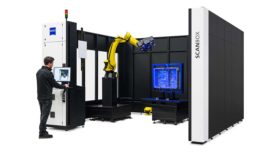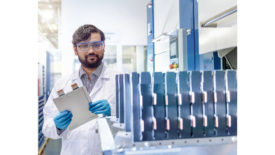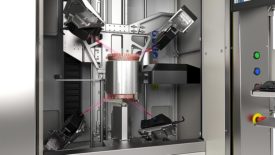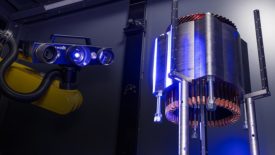Home » electric vehicle (EV)
Articles Tagged with ''electric vehicle (EV)''
Vision & Sensors | Battery
Image Processing in Battery Cell Manufacturing
Machine vision is an elementary part of quality assurance in battery cell production and is used in a variety of production steps.
August 13, 2024
CMS Column | Justin Novak
Metrology and the EV Revolution
In a sector that’s going places, measurement is driving.
July 31, 2024
NDT | XRF
Ensuring the Quality of Lithium Ion Battery Manufacturing Amid Surging Demand
As the demand for Li-ion batteries continues to rise, efficient manufacturing and recycling practices become imperative.
July 11, 2024
Automated Inspection
Automating EV Battery Tray Inspection Increases Speed of Information
Many EV manufacturers are still searching for the optimal inspection method for the battery tray.
April 19, 2024
NDT | Leak Testing
Leak Detection’s Crucial Role in Li-ion Traction Battery Production
Manufacturers that routinely challenge their leak tightness testing process will consistently produce products with reliable performance, battery longevity and safety.
January 9, 2024
Test & Inspection
New Noncontact Technologies Meet the Challenges of the Evolving Automotive Industry
The transition from ice to electric powertrain requires a complete review of the approach to quality and process controls.
December 28, 2023
Machine Vision Systems
Machine Vision for Battery Production 4.0
Machine vision has increasingly established itself as an indispensable technology for companies in a wide range of industries.
November 13, 2023
Quality 101
GD&T for Electric Vehicles Supports Consistent Quality Control
GD&T allows engineers to define feature relationships, ensuring proper alignment and interchangeability.
October 17, 2023
NDT | Computed Tomography
Creating the Future of Mobility with CT Inspection of Batteries
Industrial x-ray and CT inspection supports quality control and failure analysis at all stages of a battery's lifecycle.
September 21, 2023
Stay in the know with Quality’s comprehensive coverage of
the manufacturing and metrology industries.
eNewsletter | Website | eMagazine
JOIN TODAY!Copyright ©2025. All Rights Reserved BNP Media.
Design, CMS, Hosting & Web Development :: ePublishing










